For my upcycle project, I wanted to create an artifact that with a Cyberpunk tech aesthetic. There are many elements in this kind of aesthetic, but I focused on exposed electronics and a bright color pallet. I really enjoy the innovative designs that the Cyberpunk tech aesthetic has. Usually, there are many components involved in each device. A key aspect seems to be the use of bolts throughout the artifacts. Unlike the sleek aesthetic we have now with our technology, Cyberpunk tech seems to have more of a maximalist look to it. There are multiple parts that need to be attached together. A lot of the time there are wires exposed and words covering the artifacts.
A big inspiration for my project was @an_impropbable_future. The artist behind these designs and many others is an industrial designer who uses designs created by AI to envision what the future may look like. Some examples of their work are:

Camera – @an_impropbable_future
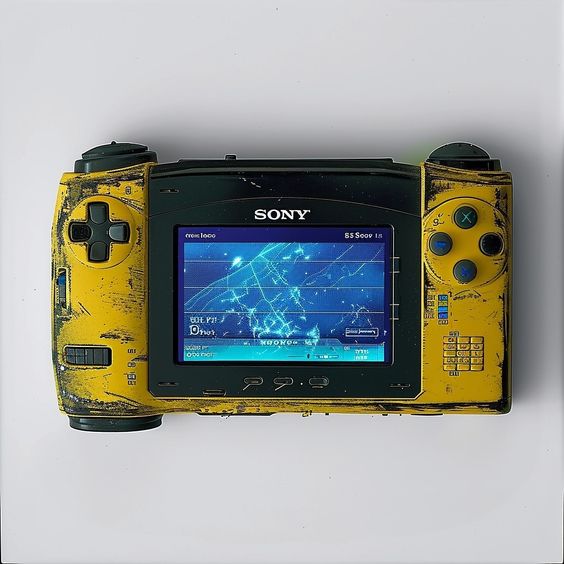
Device – @an_impropbable_future
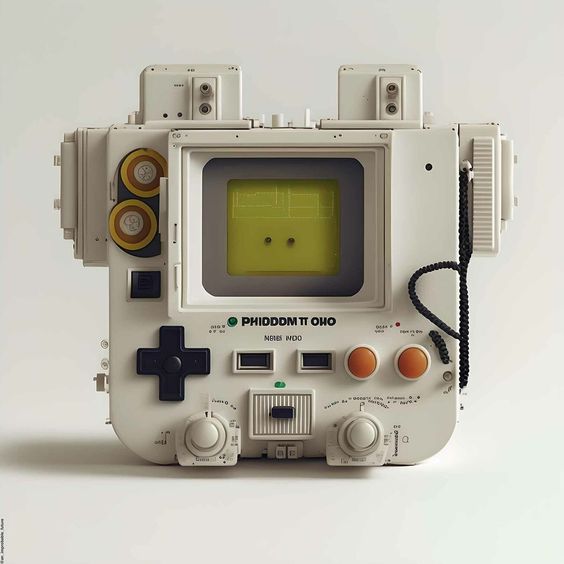
Device – @an_impropbable_future
With this aesthetic and inspirations, I wanted to create something similar with discarded hardware from the Aurora Public Schools IT Department. While scavenging for parts for a couple weeks I was unable to acquire a lot of hardware I wanted. After some time, I was only able to get a Chromebook, an old reciept printer, and an old laptop fan. I decided that was enough for the project and settled on those parts for my project. Initially I wanted to 3D print the main casing of the Communicator, but I felt it went against the scope of the project and reverted to using chipboard instead. The following image shows all the things I wanted to use for the project:
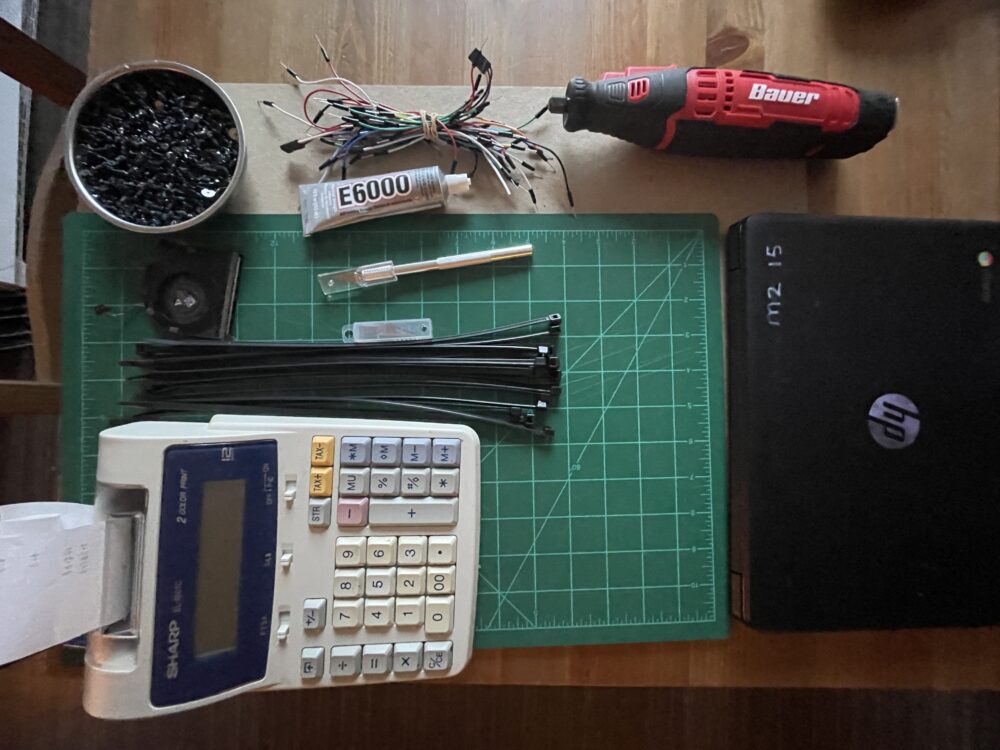
With these limitations and materials in mind, I was able to start ideating my artifact. The image below has some sketches I made of all the hardware I was going to use. I dimensioned out the parts to know how big the Communicator was going to be. I decided to use the keys from the printer to add some tactile functions to the artifact. I planned on using the screen from the Chromebook to display a sci-fi like screen. The rest of the hardware is just going to be spread throughout the artifact to attempt and mimic the maximalist feel of the Cyberpunk tech aesthetic.
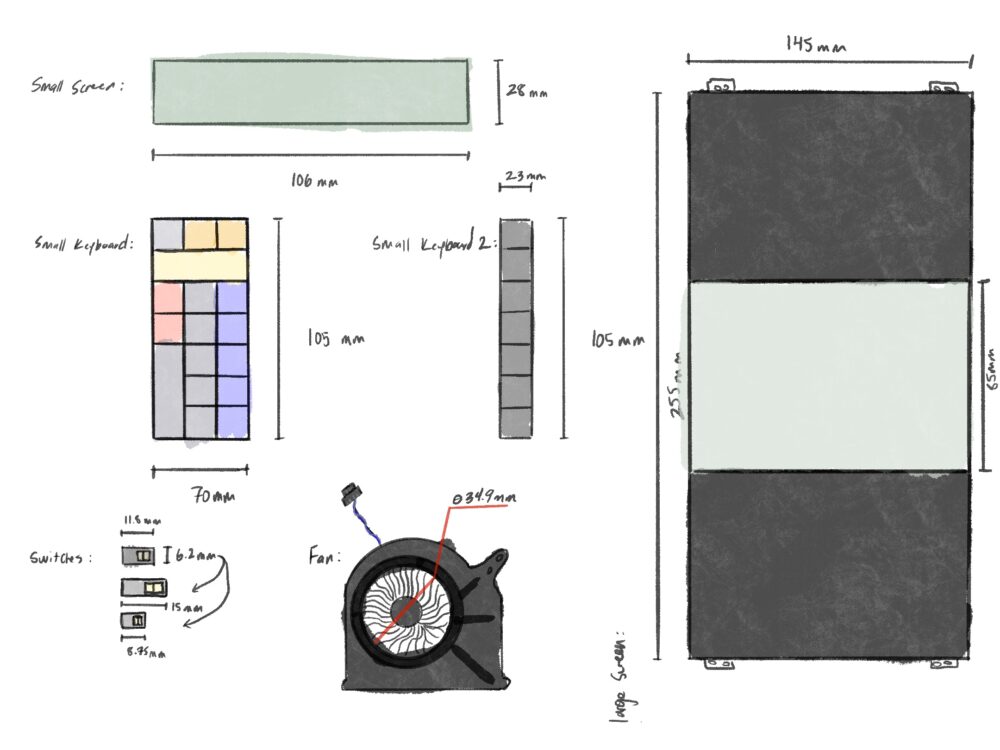
After figuring out the dimensions and how I wanted to use everything I sketched out the Communicator itself. The image below shows how everything is going to be laid out. The main face of the Communicator will be equipped with the main screen displaying the sci-fi screen. It will also feature knobs, some of the keys, and other a couple other smaller pieces of hardware. The top, left, and right sides will also feature some of the main components I outlined above.
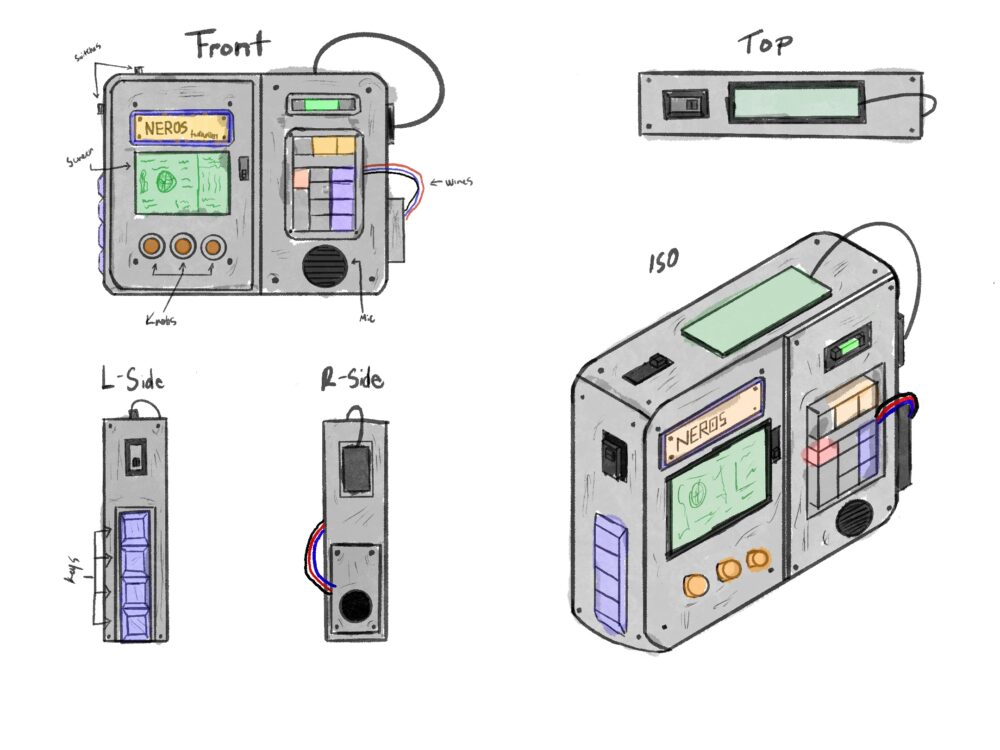
Since I had a good idea of how the Communicator was going to look, I went ahead and started the fabrication process.
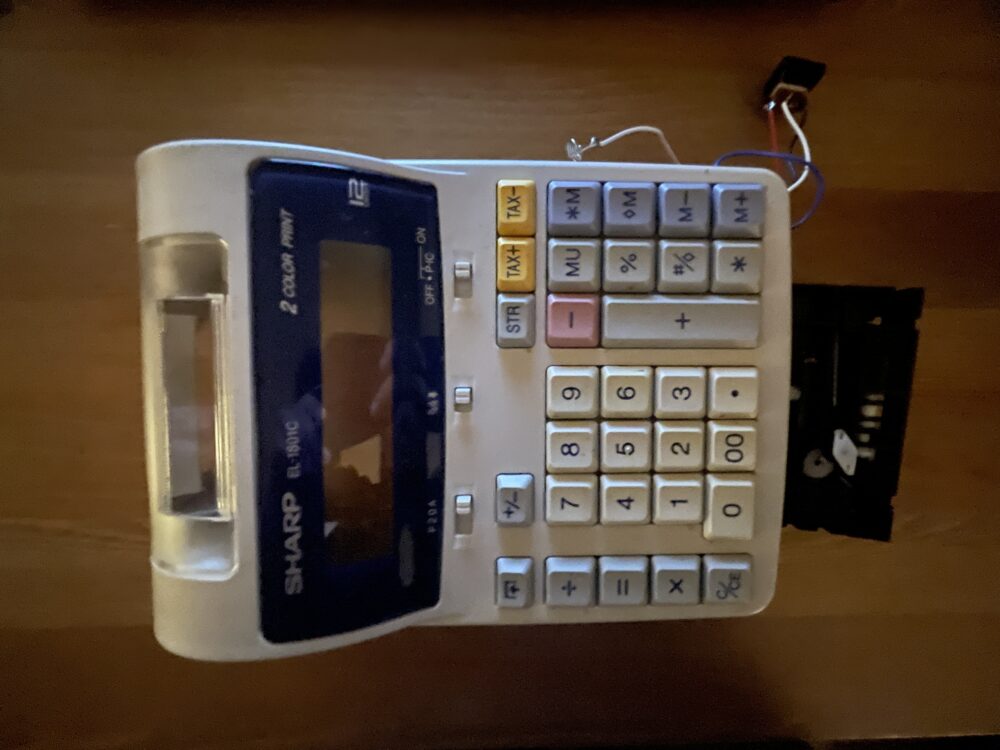
I started by taking the printer apart. I disassembled the case and pulled out the screen. I also split the keys apart into different sections to use it throughout the Communicator.
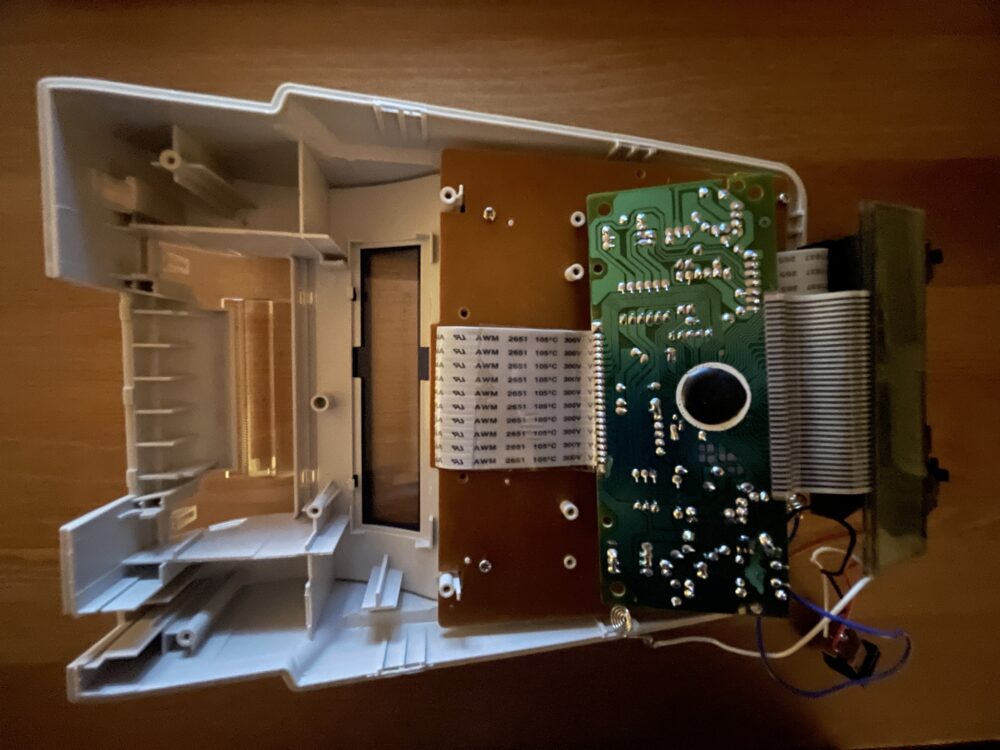
Once all they keys and the screen were taken out I cut out the basic shape of the Communicator with the chipboard.
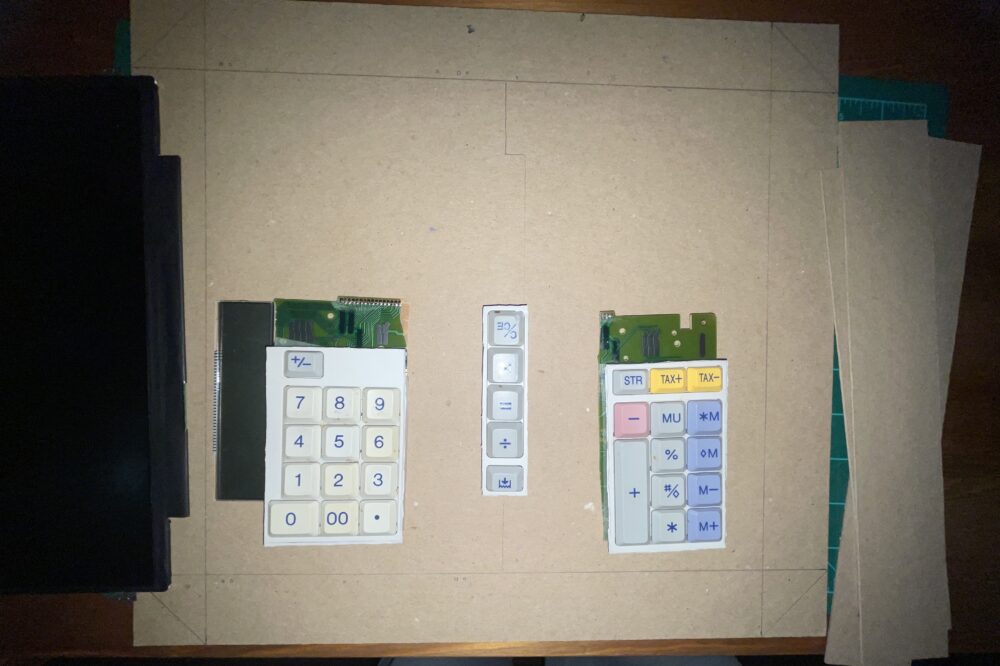
The image below shows the inside of the Communicator. I removed all the electronics from the Chromebook and organized them to still have a functioning computer without the casing. Since I didn’t want to use the full screen for my display I flipped the screen to create a smaller display.
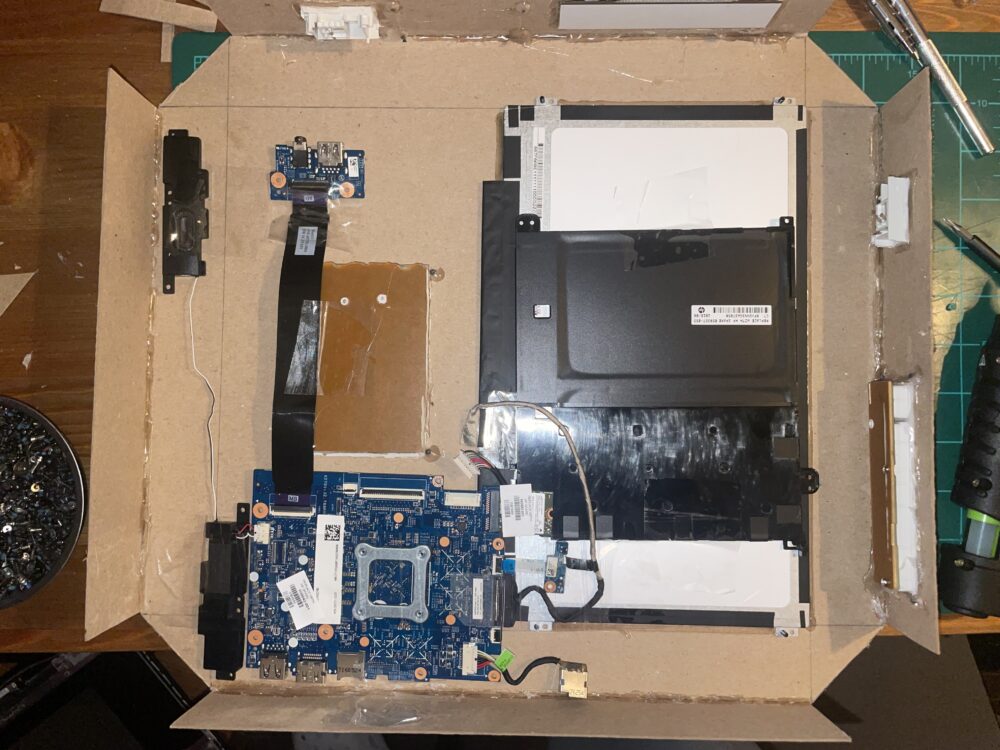
The image below shows the face of the Communicator. It shows how the keys were used and how the screen was shortened to create a smaller display. You can also see I made some decorative knobs and a microphone/speaker. I also added screws throughout to help with the aesthetic.
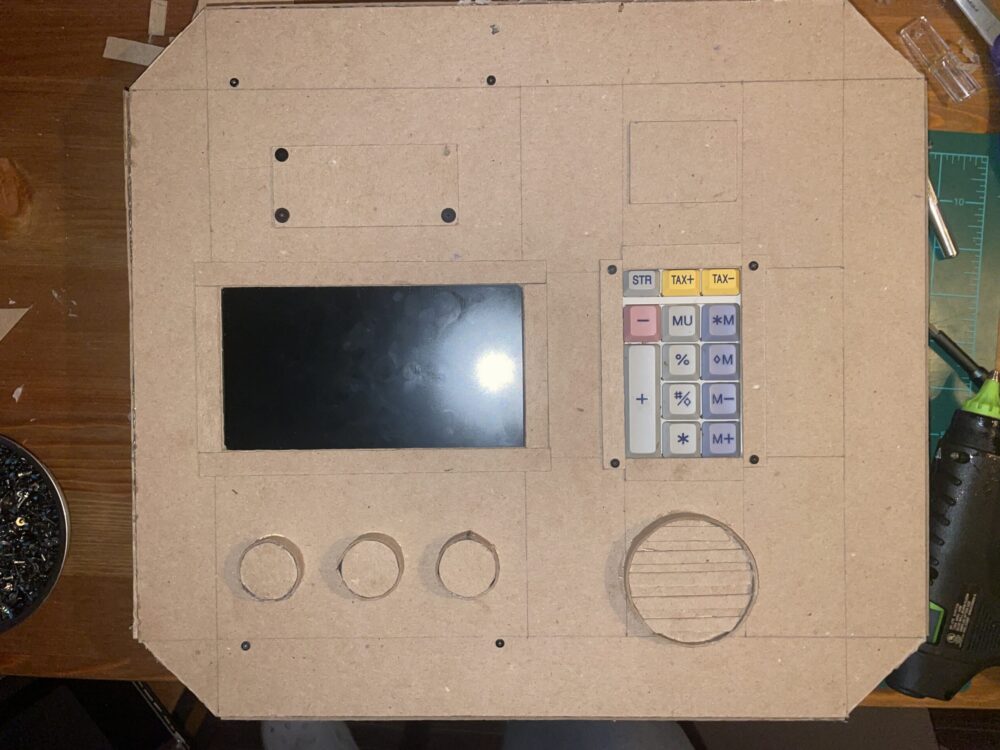
After this I added the rest of the components to the sides of the Communicator. Now that everything was set in place, all i needed to do was as add some paint. The Final artifact looks like this:
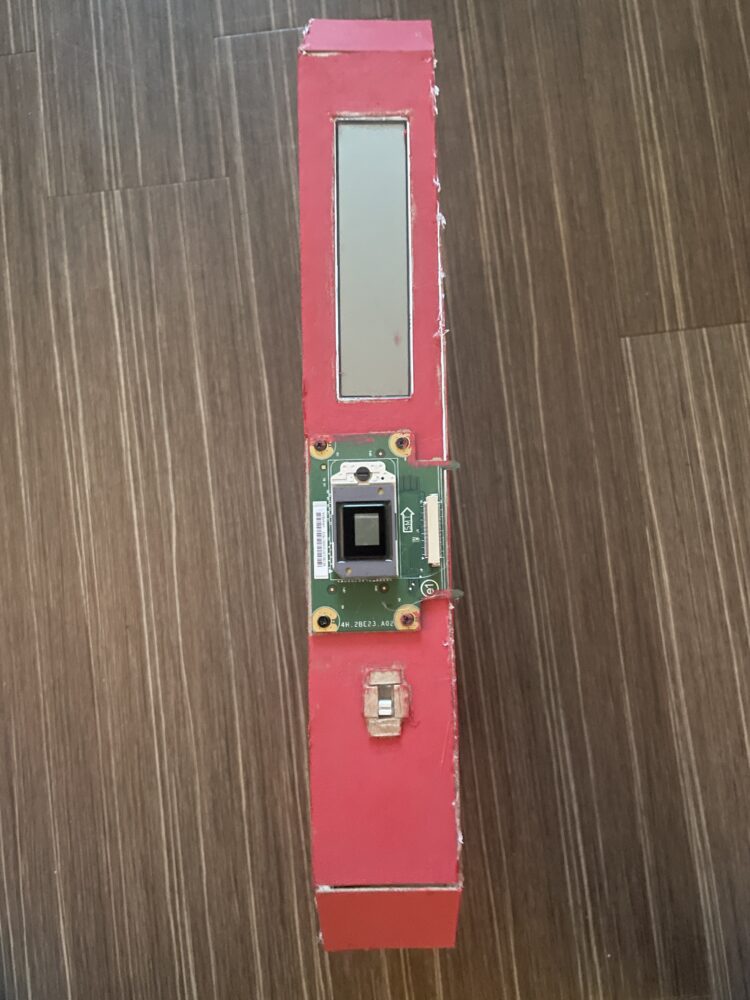
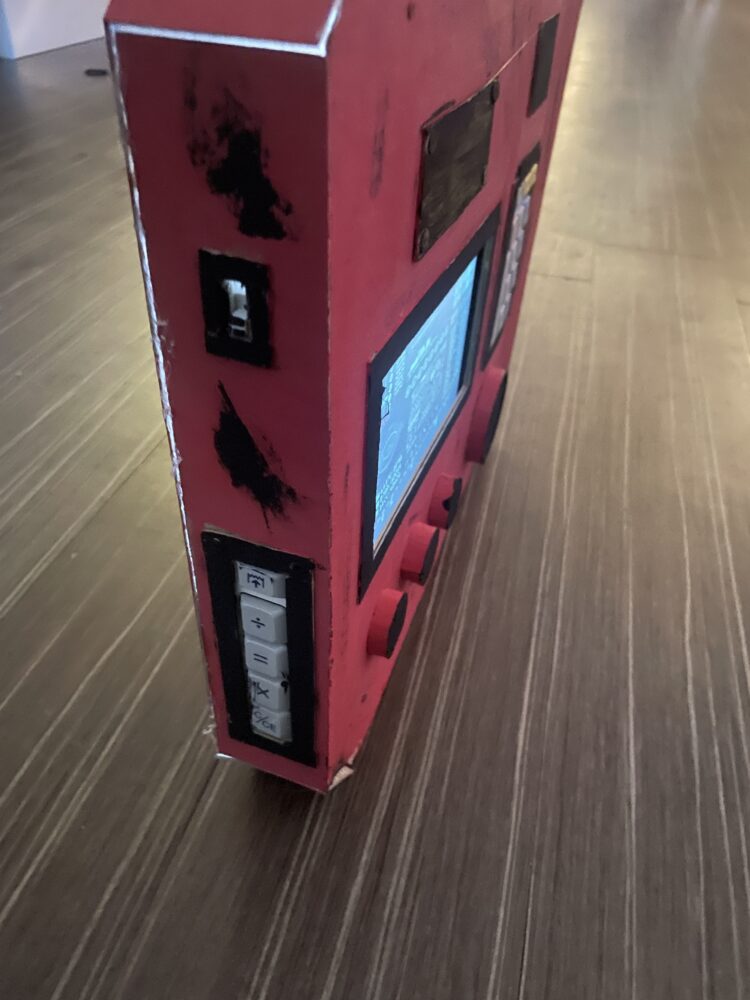
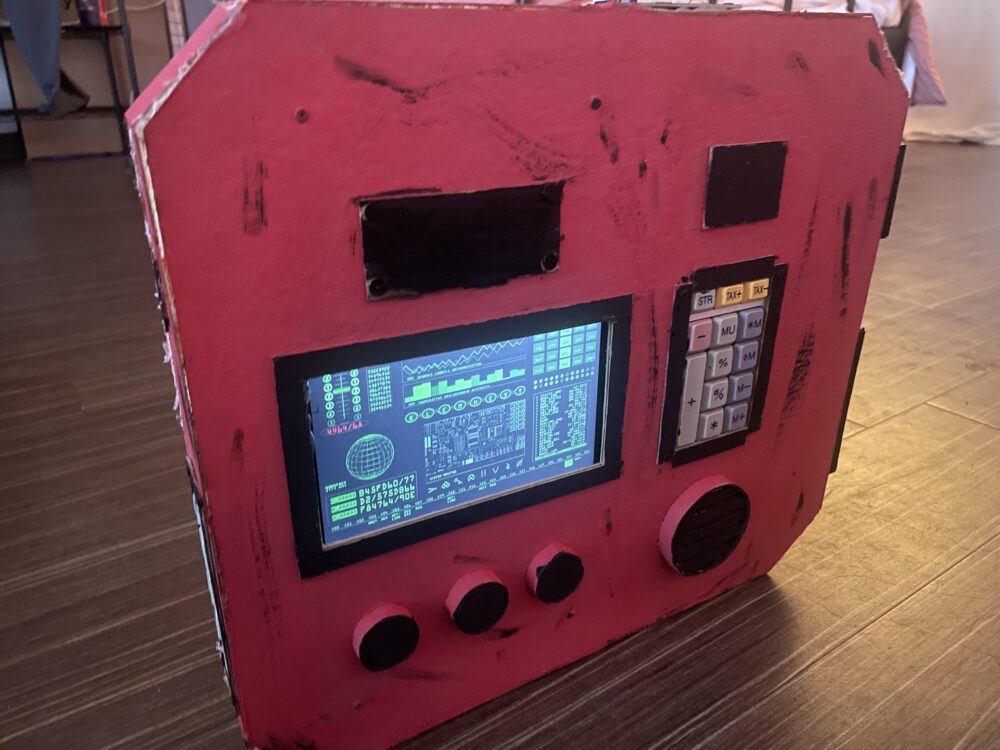
Overall, I achieved all of my functional goals. The main function I wanted was for the display to work and be able to mimic the Cyberpunk aesthetic. I feel like the screen works well and achieves what I was aiming for. The keys were still functional and helped provide a tactile function to the Communicator. As for my artistic goals, I do not feel like everything I wanted to achieve was accomplished. I painted the case because the chip board did not fit the aesthetic at all. After painting the case. I did not like the look much and I also didn’t achieve the “finished” look I wished for. Since I used hot glue to put everything together, the case did not have a clean look. In general, the Cyberpunk aesthetic I was going for was not really met.
As for what’s next steps of the project, I will be recycling everything that I used. The scope of the project asked for upcycling which in many ways limited what I could do and use. In the future I would like to give this artifact another shot but with different materials and less constraints.

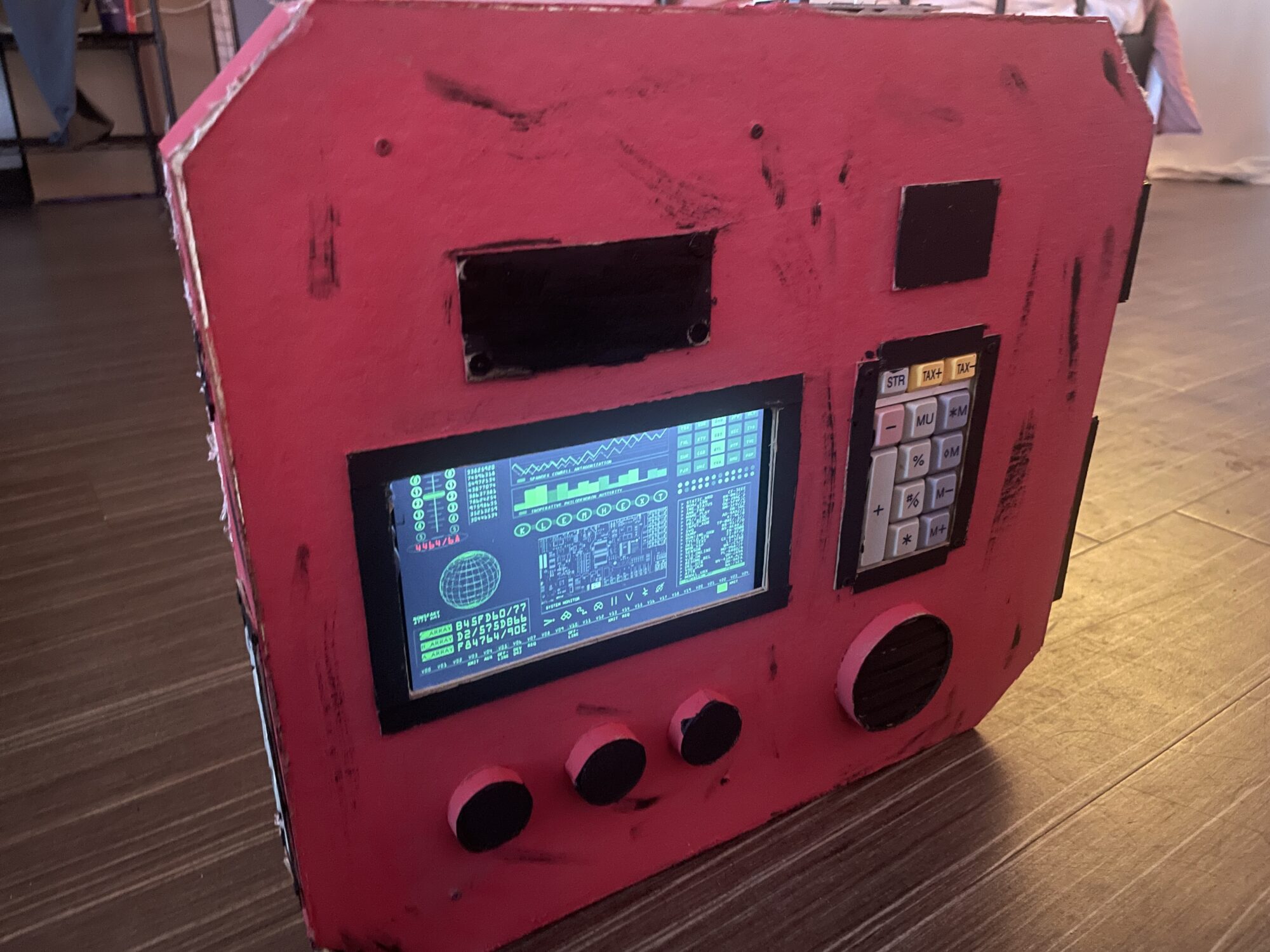
4 Comments. Leave new
The aesthetic and vibe makes me think more sci-fi and I genuinely like that. It reminds me of early Mass Effect or something in Ratchet and Clank, honestly really cool you were able to do all that with your constraints.
Amazing !!
Such a great way to go about creating a steampunky electronic aesthetic! I love that you disassembled old technology to make it into something new like this I love the way it turned out. I think that carboard limits you because it is just such a different material than electronic components, and the only real critism I have is that the choice of pink might constrast a little bit with all the other elements you have at play here.
Hey Alexis, I think your finished artifact looks awesome and definitely hits your aesthetic! It would look great as a prop for something!